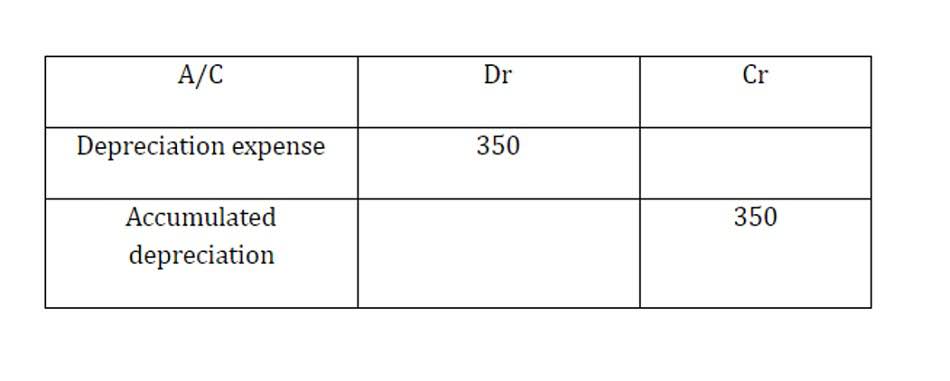Statutes of limitations for assessing, collecting and refunding tax Internal Revenue Service
In this value, here are the 7 things I learned away from matchmaking adult female
October 19, 2022Casinos Com jogos de bingo gratis show ball Bônus No Deposit
October 21, 2022Statutes of limitations for assessing, collecting and refunding tax Internal Revenue Service

As noted in FAQ 1, the IRS continues to accept input and plans to closely monitor the adjusting entries process and questions during the one-year transition period to determine if any modifications are necessary. Emerging business owners who have qualified research expenses (QREs) and no taxable income may still be able to offset their investments in research and development (R&D) innovation via tax credits. This is possible because of a provision known as the federal R&D tax credit carryforward. Alternatively, if you don’t want to shorten your accounting period but would like to receive your credit or relief sooner, it might be worth considering R&D advance funding. Advance funding gives you access to up to 80% of your future R&D tax credits up to 9 months before receiving the payment from HMRC.
How to determine R&D eligibility?

The two year limit arises because R&D tax credits are a Corporation Tax relief claimed via your Corporation Tax return. You have 12 months from the end of your accounting period to submit your Corporation Tax return, and a further 12 months to amend it, resulting in a window of up to two years to submit your R&D claim. Yes, the Tax Cuts and Jobs Act (TCJA) eliminated the alternative minimum tax (AMT) for C-corporations and provided businesses with the opportunity to further reduce their tax bills using past, present and future R&D tax credits. It also amended Internal Revenue Code (IRC) Sec. 172(a) for tax years beginning after December 31, 2017, restricting the application of net operating losses (NOLs) to 80% of taxable income.
File
- Generally, there are two methods for computing the QREs-based credit, regular and alternative simplified.
- There’s a chance you might be audited, but you are at no greater risk than anyone else.
- R&D tax credits are available to all organizations that engage in certain activities to develop new or improved products, processes, software, techniques, formulas or inventions.
- While you can claim for a project that has spanned multiple years, you can also claim for 2 prior years’ accounting periods if you haven’t yet made a claim for them before.
If there is a lack of tax liability, business may carry unused credits forward for up to 20 years. FEMA encourages all flood insurance policyholders who had damage to file claims. The amount of damage determined by local building inspectors DOES https://www.bookstime.com/articles/music-industry-accounting NOT affect the amount paid to National Flood Insurance Program policyholders. To qualify for R&D relief, your project must seek an advance in a field of science or technology by resolving scientific or technological uncertainty. HMRC does, in certain situations, have powers to allow the extension of the two-year time limit. These exceptions are, however, very rare and do not include a lack of awareness of the potential to make a claim for relief.
What activities don’t qualify?

If you were eligible for the Research and Development Tax Credit but didn’t know about it (or didn’t take it because you thought it was too complicated), you can still go back and take it by amending your income tax return. Even if the length of your accounting period is longer or shorter than 12 months, the deadline for submitting a claim is still two years from the end of each accounting period. The same would apply if you changed your accounting period at any r&d tax credit other time. It’s common for newly formed SMEs to adjust their accounting year-ends after registering as a limited company at Companies House. This is because your first accounting period is automatically set as your company’s registration date. However, a more operationally convenient date, like the UK financial year-end on 31 March, is often preferred.

What if I missed claiming the R&D tax credit in previous years?

In order to claim these costs towards the R&D tax credit the contract must not be deemed “funded.” The term “funded” has a specific legal definition that includes a two-pronged test, which has been refined by years of caselaw. This definition is not always intuitive, thus reinforcing the importance of having a R&D tax credit professional conduct the contract analysis. The requirements for pre-notifying HMRC only apply to accounting periods beginning on or after 1 April 2023. You must let HMRC know that you intend to make an R&D claim within six months of the end of the accounting period you wish to claim for (the claim notification period). For example, a company with a 31 March 2024 year end would need to pre-notify HMRC between 1 April 2023 and 30 September 2024. The IRS can take as long as it wants to review your taxes and finalize your liability if you don’t file tax returns.
If you’re a startup looking to opt for a credit carryforward, you’ll need to contact a specialist in this area. Once you have applied the credit carry back, the only limitation on these credits is a 20-year R&D credit carryforward period. There is no maximum ceiling on how much you could claim via this tax credit.
